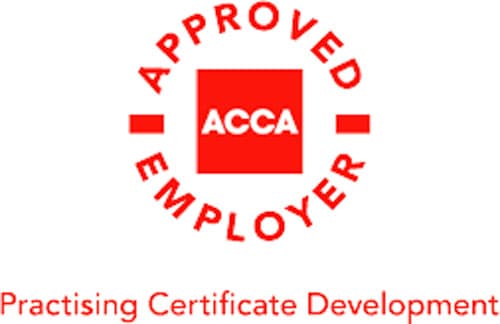After the First Tier and Upper Tribunals determined that one ‘combi’ vehicle used by employees was to be treated as a ‘van’ but the other should be treated like a ‘car’ …. HMRC appealed to the Court of Appeal.
The Court of Appeal judges rules that BOTH should be treated like a ‘car’.
The main points that are being made is that for employment tax (and also Capital Allowances purposes), a vehicle has to be primarily designed and constructed to carry goods or equipment rather than passengers.
- Actual use of a vehicle is irrelevant, the statutory test is of construction, not use
- The fact that the manufacturer or dealer describes the vehicle as a “commercial vehicle” is not relevant (nor that it pays road tax as a commercial)
- If a vehicle is designed and marketed as a multi-purpose vehicle, it is unlikely to fall within this exception (i.e. it is 50:50 not primarily)
- Even if the preceding 2 paragraphs do not apply but neither purpose predominates with regard to the construction of the vehicle, the vehicle is not primarily suited for either purpose and this means that it does not escape from being treat like a car.
This casts even more doubt on whether this type of ‘combi’ van can ever be treated as a ‘van’.
The appeal was heard in July 2020 and we are not aware yet that Coca Cola are appealing to the Supreme Court.
Why does it matter?
A van attracts a flat-rate benefit in kind tax treatment whereas a car’s benefit-in-kind treatment is determined by the list price of the car and its CO2 emissions.
A van can qualify for the Annual Investment Allowance for capital allowances where a car only attracts Writing Down Allowances.
Our Original Article….
Lots of van manufacturers are now introducing “Combi” versions of their vans (also sometimes termed “Crew” Vans – VW Kombi, Mercedes Dualiner and are examples, Ford also produce them).
Basically they’re a van but with an at least one extra row of seats, doors and windows behind the driver.
Whilst these are generally a commercial vehicle for VAT purposes and for road tax purposes, the direct tax rules (for benefits in kind and capital allowances) do not follow the same principals.
This is where you need to be careful if you are looking to purchase/lease one of these vehicles (or have already done so) particularly if it is to be used for any private uses by any employees/directors.
Firstly, it is unlikely to be eligible for the Annual Investment Allowance, meaning standard Writing Down Allowance at only 6%.
Secondly if there is private use:
- a) it will not be eligible for the van exemption where private use is ignored if its home-work only.
- b) It will be taxed like a car based on list price and Co2 emissions.
All this is due to how the legislation determines what is a car and what is a van for these purposes.
Basically everything is a car unless it falls into one of the exemptions. The ‘van’ exemption is if it is “a goods vehicle – being of a construction primarily suited to the conveyance of goods or burden” (as opposed to the carrying of people).
So, the test is about the vehicle construction, not what its actually used for. HMRC’s argument is that a vehicle with extra seats, doors and windows for several passengers cannot be primarily constructed for carrying goods or burden.
They even take this point where the seats are not actually fitted but are capable of being so, because to reiterate, it’s about what the vehicle was constructed for not how it’s actually used.
Finally, do not think that these vehicles are treated like Double Cab Pickups – these alone are treated as vans for direct tax purposes using the VAT definition of a van which is being able to carry one tonne of load – this rule does not apply to any other vehicle for direct tax purposes.
Therefore, you need to think carefully before you get one of these vehicles, the tax implications are much worse than you may realise. If you already have one in your business then I suggest you call the tax department to discuss the matter.
Coca Cola vs HMRC – Original Case Summary
Coca Cola and two of its employees took HMRC to the First Tier Tribunal when HMRC declared that the employees’ Volkswagen Transporter Kombi and Vauxhall Vivaros were cars and not vans.
Both the Kombis and the Vivaros were bought by Coca Cola to transport vending machines to and from their designated locations and all had the following modifications:
- additional racking
- floor coverings
- bulkheads (bulkheads are partitions that are located behind the seats in a van to separate them from the cargo being transported)
The judge’s decision came down to his assessment on whether each vehicle had a “dual capability of carrying passengers and carrying cargo”.
For the Vivaro, the judge decided that “on a narrow balance, the construction of the Vivaro was primarily suited to the conveyance of goods” because:
- the engine/transmission and the mechanical components (fuel tank, exhaust, rear suspension) of the Vivaro were mounted transversely and the driver’s position was set high, “each in order to maximise the load area and the load volume”
- the sliding door and the rear door “facilitated loading”
- the suspension was designed to carry a 3-tonne gross weight value
- the braking system and components were designed to “operate effectively up to a maximum of 3,000 kg GVW and whilst towing a braked trailer of up to 2,000 kg”
- the middle part of the payload section was taken up by seating which needed tools for its removal and that there was still enough space with the seating in to carry a payload
For the Kombis, the judge decided that the vehicles were not “constructed primarily” to be exclusively for the use of goods conveyance because:
- the Kombi’s basic design characteristics were the same as the “VW Transport T5 panel vans such as the Shuttle and the Multivan…essentially minibuses designed to carry passengers”.
- the Kombis were provided with seats which, when fitted, “took up most of the space in that sector. When the seats were removed, almost the entire area of the mid-section was available for conveyance of goods”.
- the seating issue, mentioned above, made Kombis multi-purpose vehicles because the vehicles were suitable “to enable workmen to be taken to work and for goods to be carried”







